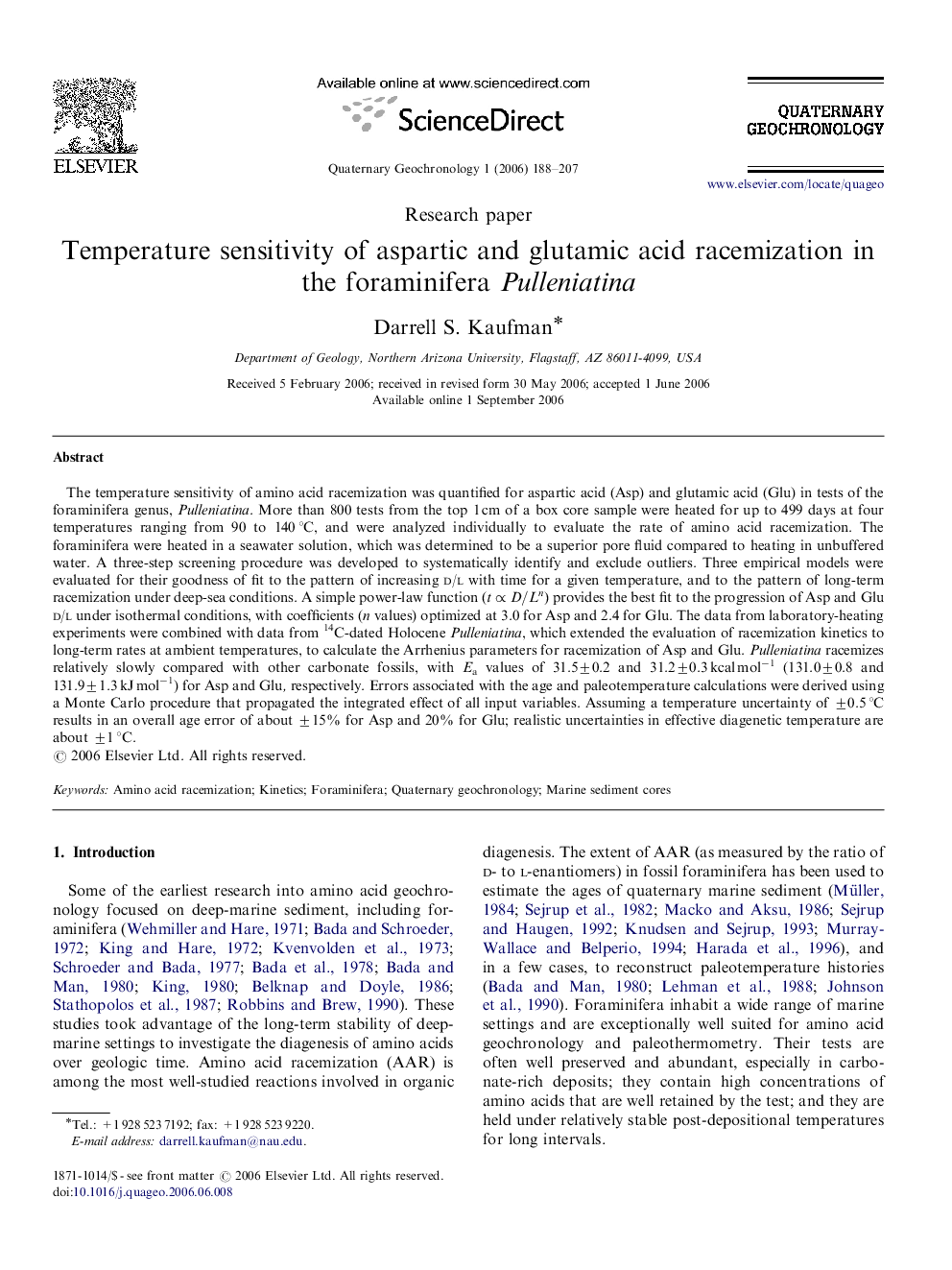| کد مقاله | کد نشریه | سال انتشار | مقاله انگلیسی | نسخه تمام متن |
|---|---|---|---|---|
| 4725338 | 1355979 | 2006 | 20 صفحه PDF | دانلود رایگان |

The temperature sensitivity of amino acid racemization was quantified for aspartic acid (Asp) and glutamic acid (Glu) in tests of the foraminifera genus, Pulleniatina. More than 800 tests from the top 1 cm of a box core sample were heated for up to 499 days at four temperatures ranging from 90 to 140 °C, and were analyzed individually to evaluate the rate of amino acid racemization. The foraminifera were heated in a seawater solution, which was determined to be a superior pore fluid compared to heating in unbuffered water. A three-step screening procedure was developed to systematically identify and exclude outliers. Three empirical models were evaluated for their goodness of fit to the pattern of increasing d/l with time for a given temperature, and to the pattern of long-term racemization under deep-sea conditions. A simple power-law function (t∝D/Ln)(t∝D/Ln) provides the best fit to the progression of Asp and Glu d/l under isothermal conditions, with coefficients (n values) optimized at 3.0 for Asp and 2.4 for Glu. The data from laboratory-heating experiments were combined with data from 14C-dated Holocene Pulleniatina, which extended the evaluation of racemization kinetics to long-term rates at ambient temperatures, to calculate the Arrhenius parameters for racemization of Asp and Glu. Pulleniatina racemizes relatively slowly compared with other carbonate fossils, with Ea values of 31.5±0.2 and 31.2±0.3 kcal mol−1 (131.0±0.8 and 131.9±1.3 kJ mol−1) for Asp and Glu, respectively. Errors associated with the age and paleotemperature calculations were derived using a Monte Carlo procedure that propagated the integrated effect of all input variables. Assuming a temperature uncertainty of ±0.5 °C results in an overall age error of about ±15% for Asp and 20% for Glu; realistic uncertainties in effective diagenetic temperature are about ±1 °C.
Journal: Quaternary Geochronology - Volume 1, Issue 3, August 2006, Pages 188–207